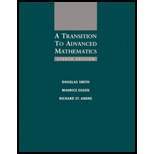
Concept explainers
a)
To find: the composite function
a)
Answer to Problem 7E
Explanation of Solution
Given Information:
Three sets are given as
Formula used:
Composition function of two sets R and S can be evaluated as
where x denote the domain of S and y denote the domain of R
Composition function of three sets R , S , and T can be evaluated as
where x is the domain of T and y is the domain of S and z is the domain of R
Calculation:
Consider the set R .
Here in the pair
Consider the set S .
Here in the pair
Construct the following diagram for the relation.
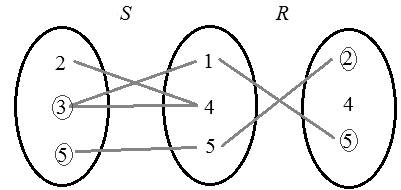
Hence,
b)
To find: the composite function
b)
Answer to Problem 7E
Explanation of Solution
Given Information:
Three sets are given as
Formula used:
Composition function of two sets R and S can be evaluated as
where x denote the domain of S and y denote the domain of R
Composition function of three sets R , S , and T can be evaluated as
where x is the domain of T and y is the domain of S and z is the domain of R
Calculation:
Consider the set R .
Here in the pair
Consider the set T .
Construct the following diagram for the relation.

Hence,
(c)
To find: the composite function
(c)
Answer to Problem 7E
Explanation of Solution
Given Information:
Three sets are given as
Formula used:
Composition function of two sets R and S can be evaluated as
where x denote the domain of S and y denote the domain of R
Composition function of three sets R , S , and T can be evaluated as
where x is the domain of T and y is the domain of S and z is the domain of R
Calculation:
Consider the set S .
Here in the pair
Consider the set T .
Construct the following diagram for the relation.

Hence,
(d)
To find: the composite function
(d)
Answer to Problem 7E
Explanation of Solution
Given Information:
Three sets are given as
Formula used:
Composition function of two sets R and S can be evaluated as
where x denote the domain of S and y denote the domain of R
Composition function of three sets R , S , and T can be evaluated as
where x is the domain of T and y is the domain of S and z is the domain of R
Calculation:
Consider the set R .
Here in the pair
Construct the following diagram for the relation.
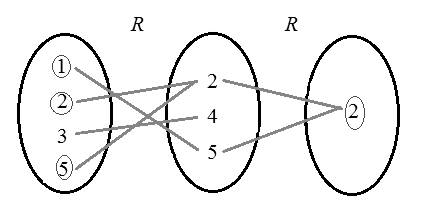
Hence,
(e)
To find: the composite function
(e)
Answer to Problem 7E
Explanation of Solution
Given Information:
Three sets are given as
Formula used:
Composition function of two sets R and S can be evaluated as
where x denote the domain of S and y denote the domain of R
Composition function of three sets R , S , and T can be evaluated as
where x is the domain of T and y is the domain of S and z is the domain of R
Calculation:
Consider the set R .
Here in the pair
Consider the set S .
Here in the pair
Construct the following diagram for the relation.

Hence,
(f)
To find: the composite function
(f)
Answer to Problem 7E
Explanation of Solution
Given Information:
Three sets are given as
Formula used:
Composition function of two sets R and S can be evaluated as
where x denote the domain of S and y denote the domain of R
Composition function of three sets R , S , and T can be evaluated as
where x is the domain of T and y is the domain of S and z is the domain of R
Calculation:
Consider the set T .
Construct the following diagram for the relation.

Hence,
(g)
To find: the composite function
(g)
Answer to Problem 7E
Explanation of Solution
Given Information:
Three sets are given as
Formula used:
Composition function of two sets R and S can be evaluated as
where x denote the domain of S and y denote the domain of R
Composition function of three sets R , S , and T can be evaluated as
where x is the domain of T and y is the domain of S and z is the domain of R
Calculation:
Consider the set R .
Here in the pair
Consider the set S .
Here in the pair
Consider the set T .
Construct the following diagram for the relation.
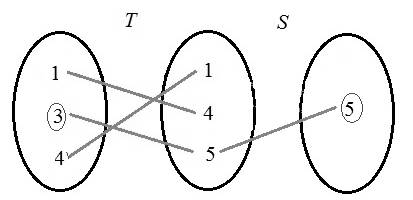
Now, find
Construct the following diagram for the relation.

Hence,
(h)
To find: the composite function
(h)
Answer to Problem 7E
Explanation of Solution
Given Information:
Three sets are given as
Formula used:
Composition function of two sets R and S can be evaluated as
where x denote the domain of S and y denote the domain of R
Composition function of three sets R , S , and T can be evaluated as
where x is the domain of T and y is the domain of S and z is the domain of R
Calculation:
Consider the set R .
Here in the pair
Consider the set S .
Here in the pair
Consider the set T .
Construct the following diagram for the relation.
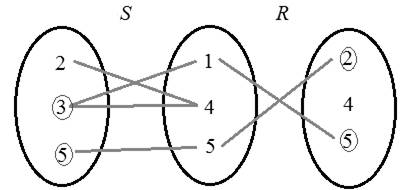
Hence,
Now, find
Construct the following diagram for the relation.
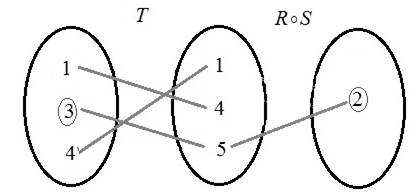
Hence,
Want to see more full solutions like this?
Chapter 3 Solutions
A Transition to Advanced Mathematics
- Algebra & Trigonometry with Analytic GeometryAlgebraISBN:9781133382119Author:SwokowskiPublisher:Cengage

 Elements Of Modern AlgebraAlgebraISBN:9781285463230Author:Gilbert, Linda, JimmiePublisher:Cengage Learning,
Elements Of Modern AlgebraAlgebraISBN:9781285463230Author:Gilbert, Linda, JimmiePublisher:Cengage Learning,


